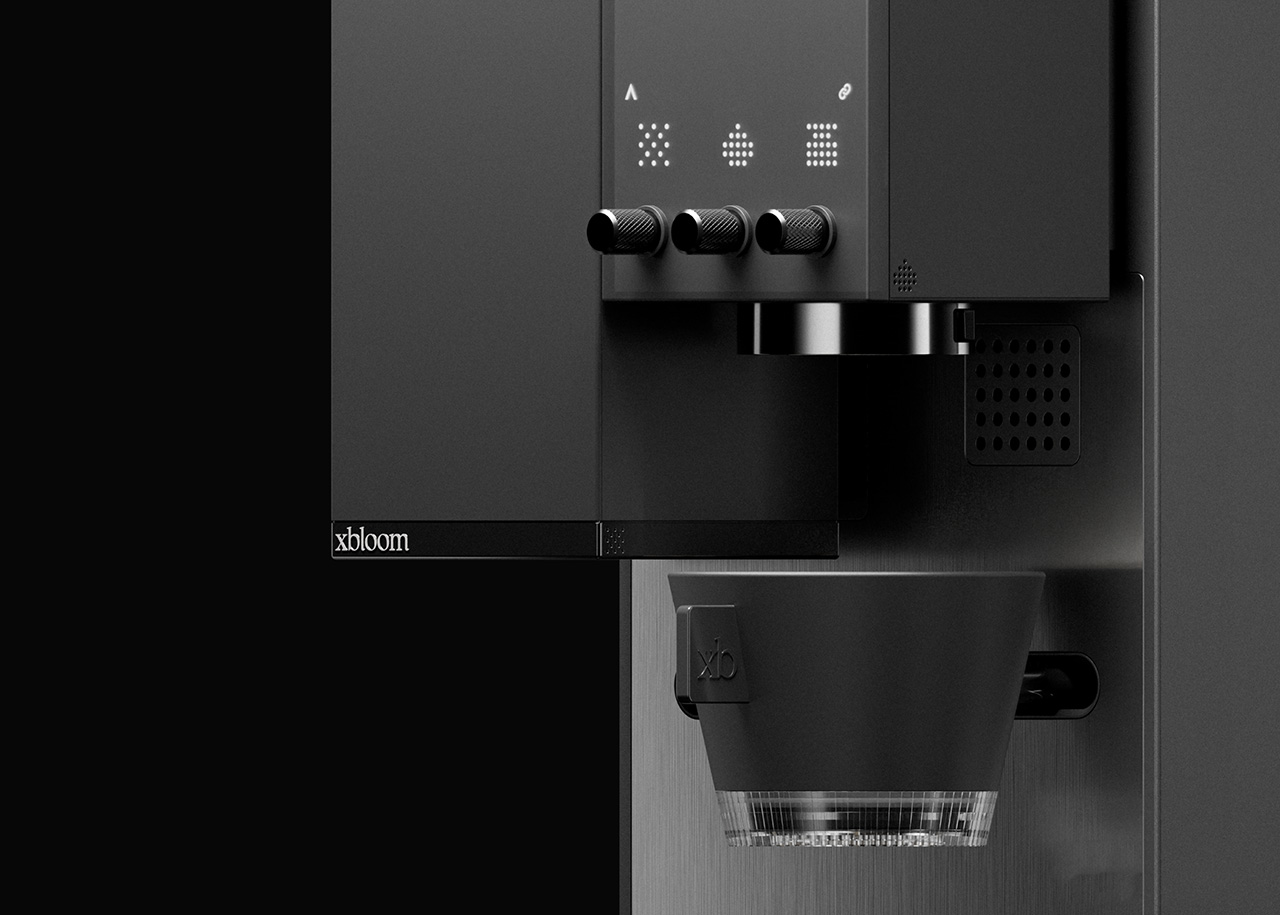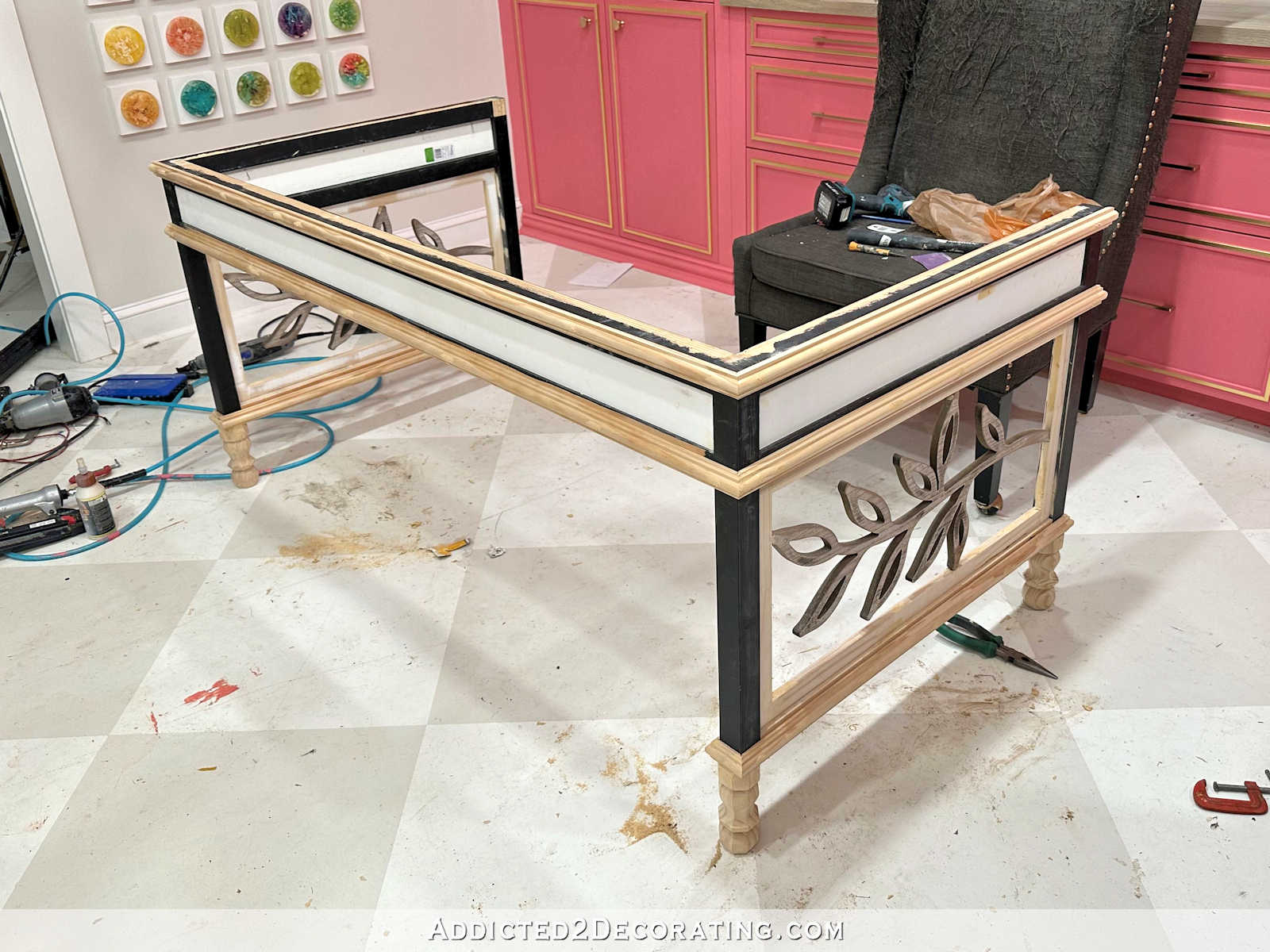[ad_1]
The first xBloom coffee machine made an entrance back in 2022, with great fanfare attributed to its contemporary design, former Apple product designer parentage, and the machine’s ability to automate a pour-over. Notably so was the convincing circular motion of a mindful barista. The original concept was to bridge the gap between the convenience of a single serving capsule machine with a more thoughtfully conceived approach, one respecting the nuanced flavor of premium roasted beans mostly absent from capsule-based machines.
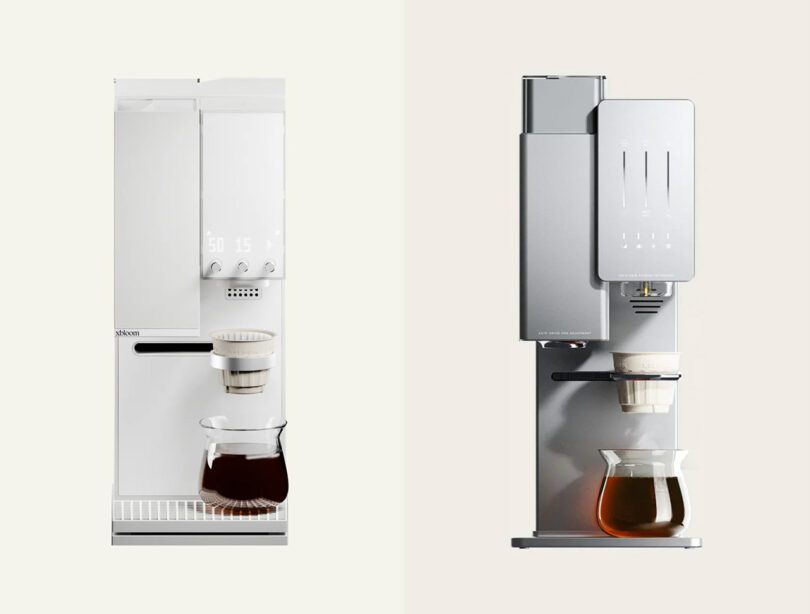
Similar, but certainly not the same: the new xBloom Studio on the left, the original xBloom on the right. The original xBloom’s “think different” design and experience went on to earn awards at the iF Design Awards and Consumer Electronic Show for both its form and function.
The new xBloom Studio model represents a similar approach to the original machine with a few key differences – including significantly, a more affordable price – permitting a wider range of preparation options focused upon retaining some of the more hands-on, ritualistic aspects of coffee preparation.
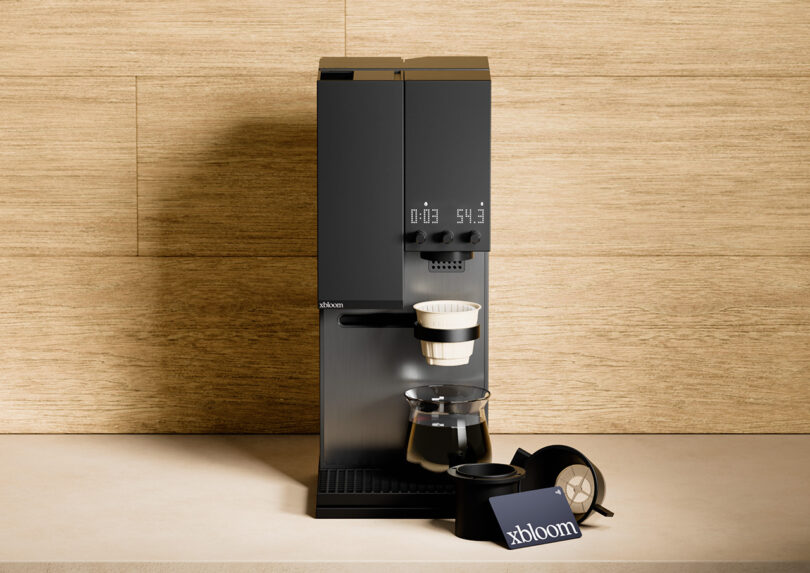
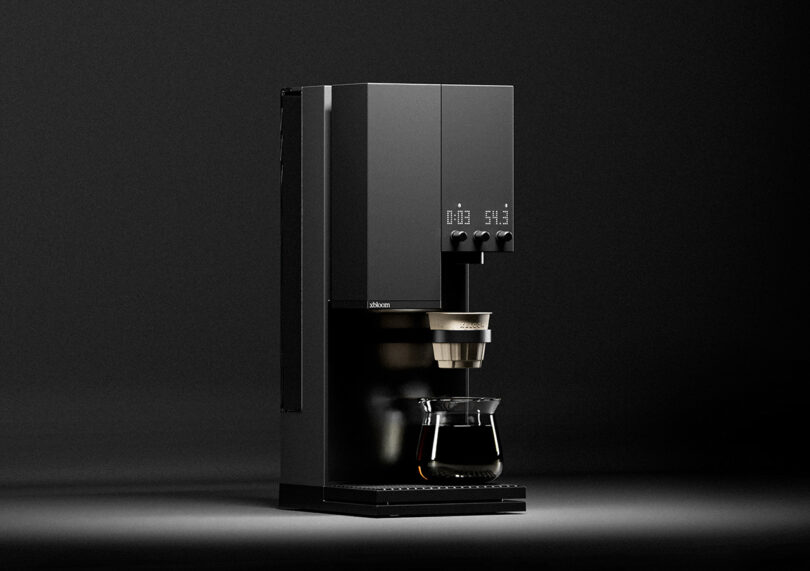
The Studio still revolves around xBloom’s fully automated single-use xPod based system, requiring users to manually pour in a measured amount of beans per serving. But now, there’s also a built-in digital scale and a trio of tactile knobs paired with an LED matrix display dedicated to dialing in temperature, pouring patterns, volume, and other variables with the purported pleasures of DJing – to that point, we do like the subtle addition of knurling to each dial.
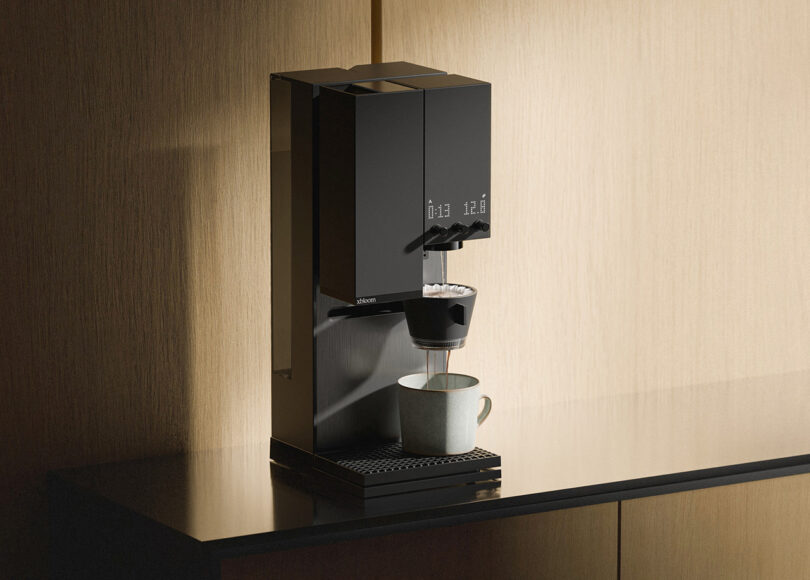
And that range of customization options is where the new Studio really distinguishes itself. Want the simplicity of the original machine’s pod-based pour-then-press experience? Don’t fret, it remains. But there’s also a trio of automation modes to choose from now: Autopilot, Copilot, and FreeSolo. Each mode is designed to deliver differing brewing techniques, including variances to the grind, the pour-over, and weighing.
Autopilot Mode uses an NFC recipe card included with each XPod capsule or coffee bag to automatically set grind size and brew settings curated to the roaster’s specs. This is the most hands-off and easy setting, akin to the original xBloom’s one-button convenience.
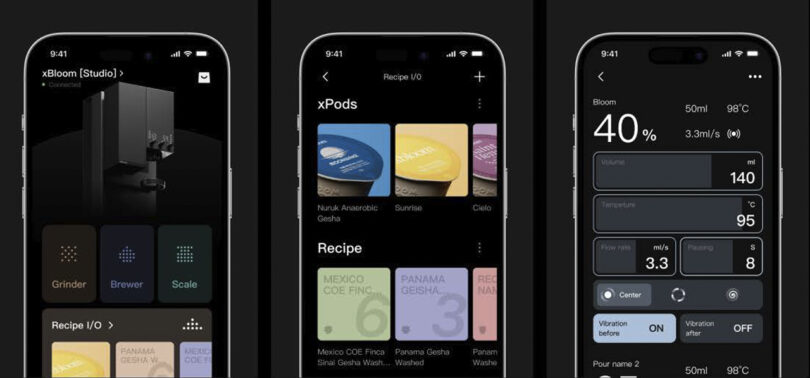
xBloom app allows users to customize variables in grind, volume, and flow rate, as well as save and share recipes.
Copilot Mode invites more customization, allowing users to introduce beans from outside the xBloom ecosystem and create recipes adjusted to individual preference via the xBloom app. Accessorized with the included dosing cup and Omni Dripper 2 paper filter holder, the Studio can pour right into a cup.
While the other two modes are comparable to driving with an automatic transmission, FreeSolo Mode is the manual option, giving users the ability to adjust all of the pour-over variables according to their discretion.
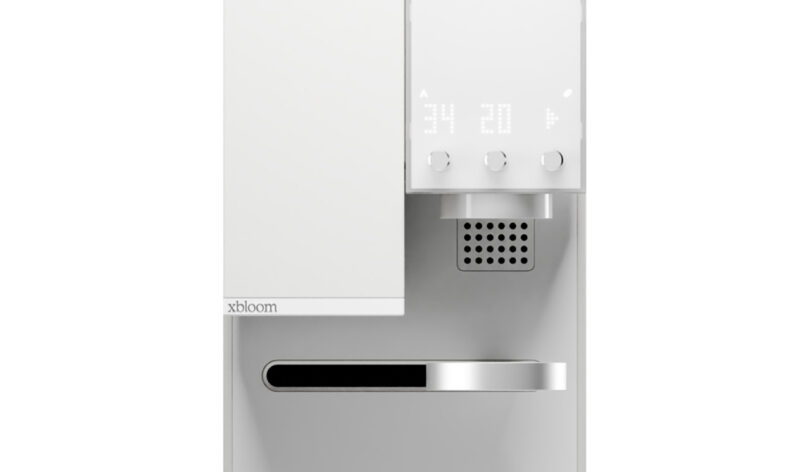
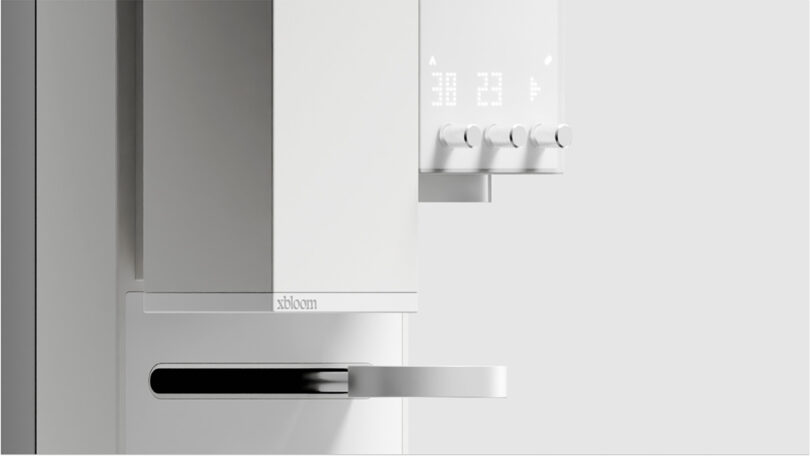
With a range of 80 grind sizes all the way down to micron-measured levels, the Studio’s 48mm steel conical burr grinder is paired with an adjustable speed assembly, giving users the option to choose anywhere from 60 to 120 revolutions per minute. The mechanism is also equipped with an anti-static ionizer – a welcome feature that should prevent cling-on wayward pieces from sullying the machine and countertops.
To further enhance the Studio, as well as distinguish itself from its older and more expensive sibling, the machine can be plumbed-in directly to a water source or water tank. However, there’s still a large water reservoir to fill up manually.
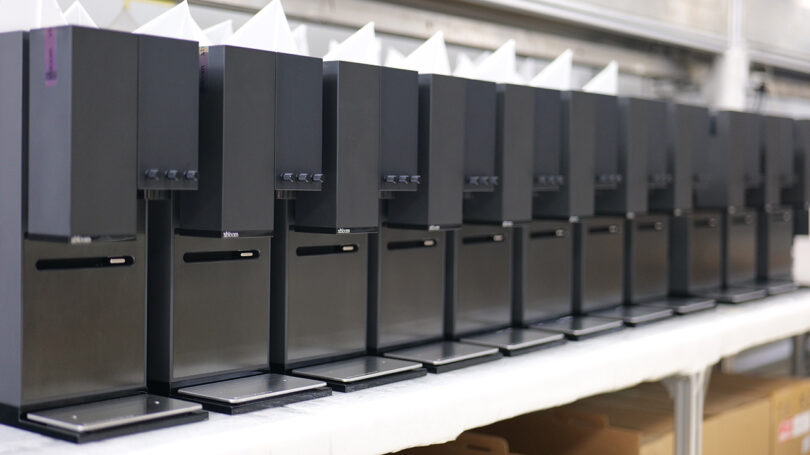
We hope to report back about the xBloom Studio’s performance once units become available for testing and tasting in the coming months. But if the original xBloom experience was any indication, it’s not inconceivable to guess the Studio might turn out to be an even better machine because of the versatility it promises.
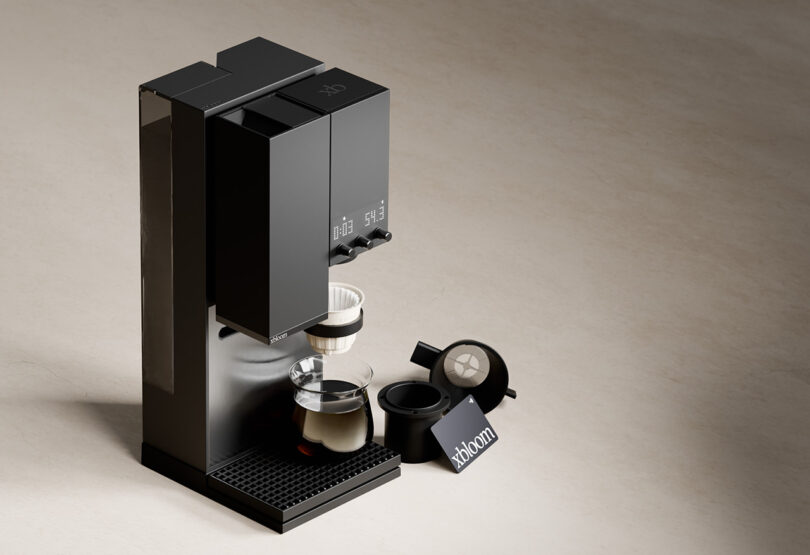
The xBloom Studio is available in Midnight Black or Moonlight White finishes for $499 here.
[ad_2]
Source link

